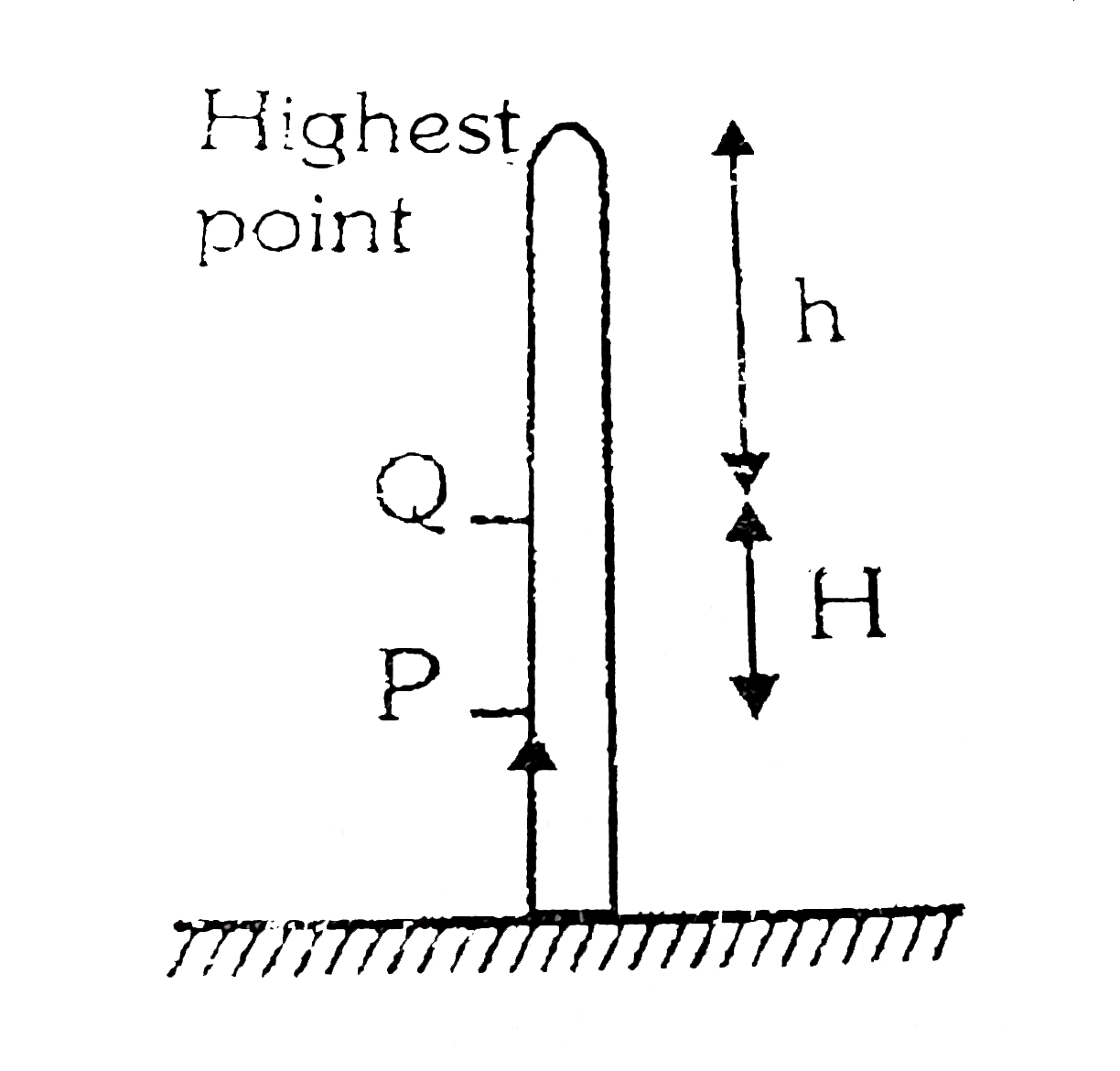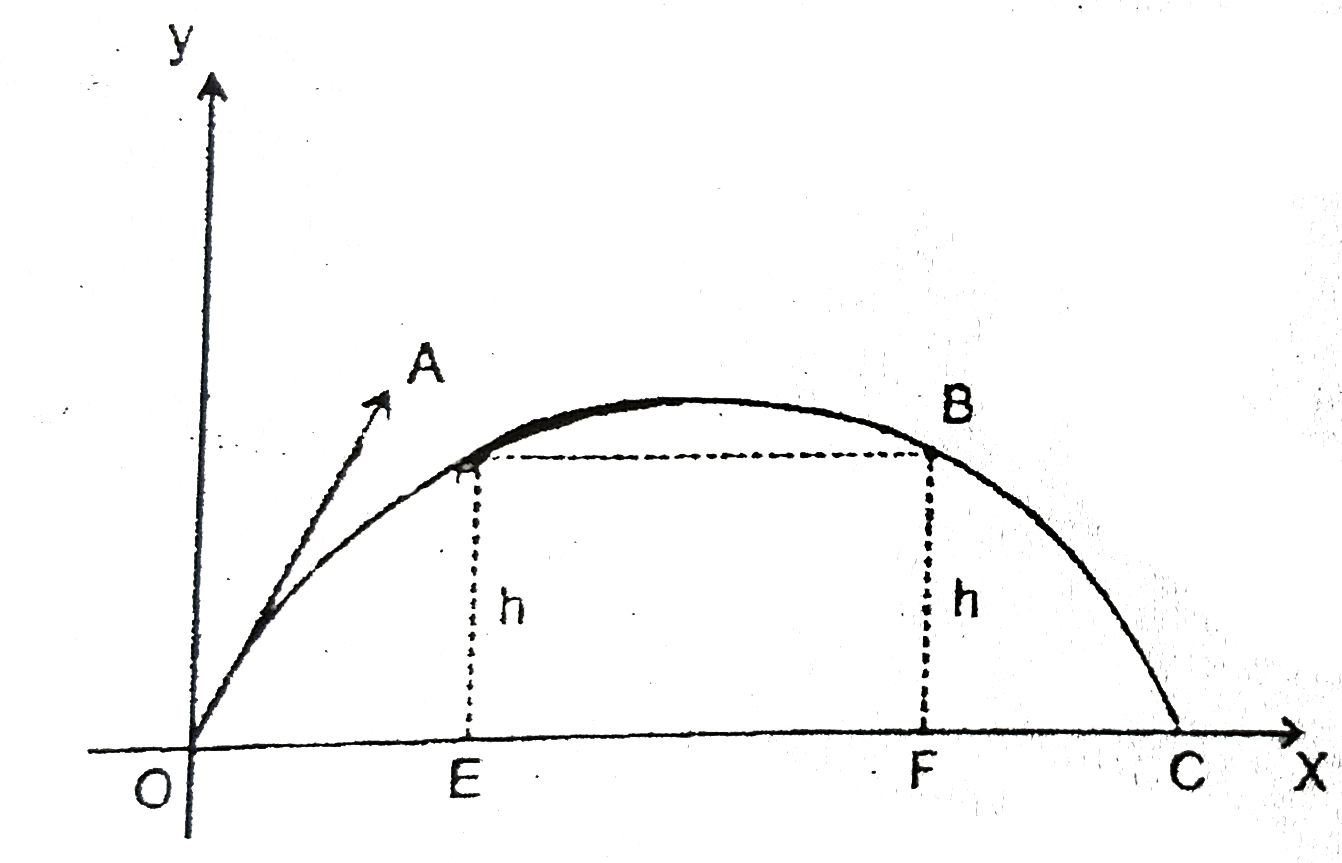A particle is thrown vertically upwards from the surface of the earth. Let TP be the time taken by the particle to travel from a point P above the earth to its highest point and back to the point P. Similarly, let TQ be the time taken by the particle to travel from another point Q above the earth to its highest point and back to the same in terms of TP,TQ and H, is :-
6HT2P+T2Q
8HT2P+T2Q
2HT2P+T2Q
HT2P+T2Q
The correct Answer is:B
Time taken from from point P to point P TP=2√2(h+H)g
Time taken from point Q to point Q TQ=2√2hg
⇒T2P=8(h+H)g and T2Q=8hg⇒T2P=T2Q+8Hg⇒g=8HT2P−T2Q

Topper's Solved these Questions
- KINEMATICSBook:ALLENChapter:KINEMATICSExercise:EXERCISE-01
Explore 55 Videos
- KINEMATICSBook:ALLENChapter:KINEMATICSExercise:EXERCISE-02
Explore 57 Videos
- ERROR AND MEASUREMENTBook:ALLENChapter:ERROR AND MEASUREMENTExercise:Part-2(Exercise-2)(B)
Explore 22 Videos
- KINEMATICS (MOTION ALONG A STRAIGHT LINE AND MOTION IN A PLANE)Book:ALLENChapter:KINEMATICS (MOTION ALONG A STRAIGHT LINE AND MOTION IN A PLANE)Exercise:BEGINNER S BOX-7
Explore 8 Videos
Similar Questions
Knowledge Check
A particle falls freely near the surface of the earth. Consider a fixed point O (not vertically below the particle) on the ground.
AAngular momentum of the particle about O is increasing.BTorque of the gravitational force on the particle about O is decreasing.CThe moment of inertia of the particle about O is decreasing.DThe angular velocity of the particle about O is increasing.The point on the surface of the earth vertically above the point of origin of the earthquake is
AepicentreBfaultChypocentreDseismicFrom a tower of height H, a particle is thrown vertically upwards with a speed u . The time taken by the particle , to hit the ground , is n times that taken by it to reach the highest point of its path. The relative between H,uandn is :
A2gH=n2u2BgH=(n−2)2u2C2gH=ν2(n−2)DgH=(n−2)u2
From a tower of height H, a particle is thrown vertically upwards with a speed u. The time taken by the particle, to hit the ground, is n times that taken by it to reach the highest point of its path. The relation between H, u and n is
View SolutionA particle is given a velocity ve√3 in a vertically upward direction from the surface of the earth, where ve is the escape velocity from the surface of the earth. Let the radius of the earth be R. The height of the particle above the surface of the earth at the instant it comes to rest is :
View SolutionFor ground to ground projectile, time take by a particle to ge point O to point C is T1 and during the same motion time taken by the particle to ge from A to B is T2 then height 'h' is :

View SolutionA particle is projected vertically from the ground, takes time t1 upto point A, t2 from point A to B and time t3 from point B to highest point and back to the ground. Find the height of the middle point of A and B from the ground.
View SolutionAn object is taken from a point P to another point Q in a gravitational field:
View Solution

